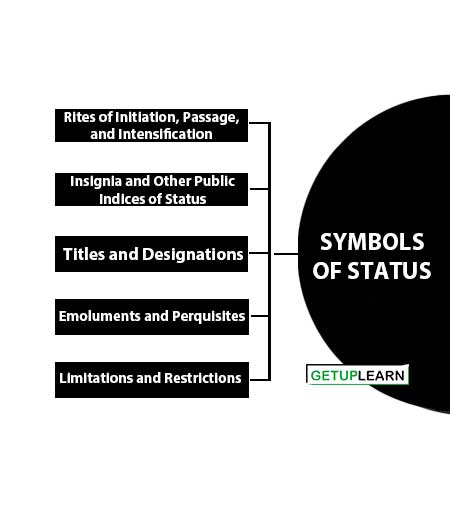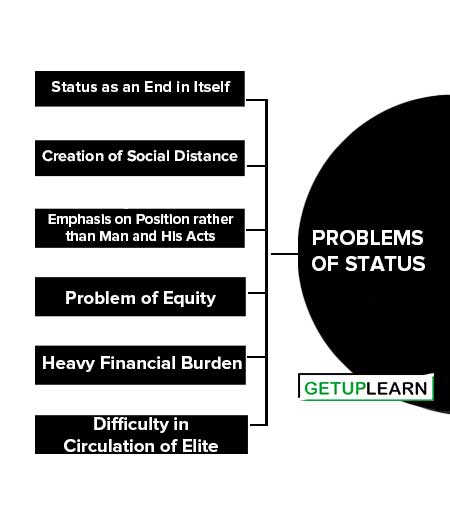Table of Contents
Meaning of Status Relations
Status relations are distinguished from power and authority relations by the fact that status is a product of judgment about where people stand in comparison with each other on some scale of judgment. There are two basic types of relationships:
- Between a higher and lower person on a scale of judgment,
- That between equals who have the same standing on the scale.
Status relations confirm the locational administrative relationships as distinct from the characterization of operating administrative relationships applied to power and authority. Status determines whether people interact as friends or with some constraints.
Features of Status
Status is a case of perception: how people look at a position in relation to other positions in the same organization, and even how society in general looks at it. A person, because of his position accorded to him by the union, an outside system, plays a unique role in the organization.
Hence, status is not an absolute property of the people. It is the interpretation others place on certain properties an individual has. They grade positions primarily in terms of their understanding of a social system and acceptance of its norms.
It is accorded on the basis of the potentialities of a position in the organization, not what is actually observable of that work by members. There may be two types of status: formal and informal, and the possibility of a divergence between the two exists.
Formal status refers to the rank of people as designated by the authority structure of an organization, whereas informal status refers to the social rank which others accord to a person because of their feelings toward him. But any incongruence between the two makes his position ambiguous and causes anxiety among people in his group.
Symbols of Status
Status symbols play an important role that many a time people confuse status symbols with status itself and any change in symbols is regarded as a change in status: Thus, through certain marks of status, the formal status of a position–holder gets established and maintained in the organization. The marks of status can be broadly grouped into five:
- Rites of Initiation, Passage, and Intensification
- Insignia and Other Public Indices of Status
- Titles and Designations
- Emoluments and Perquisites
- Limitations and Restrictions

Rites of Initiation, Passage, and Intensification
On the occasion of important festivals or the New Year, people greet each other and go to their superiors. Who attends these functions and who goes to whom throws light on the status of a person.
Insignia and Other Public Indices of Status
The possession by a student of a particular college badge, and by a sportsman of a badge for representing a university or a state or a nation, etc., indicate the status of a person in the organization concerned or in society.
Titles and Designations
Whether a person is a secretary, additional secretary, joint secretary, deputy secretary, undersecretary, etc., speak of one’s status.
Emoluments and Perquisites
There are, of course, popular indicators. Every organization has a salary structure and generally, the organization sees to it that no superior receives less than his own subordinates.
Limitations and Restrictions
Organizations may earmark certain gates for entry or exit only for certain classes of people. It may even earmark certain toilets for the purpose. In one organization, toilets bear a classification not merely in terms of ‘Ladies’ and ‘Gents’, but also ‘For Officers Only’.
Organizations establish and maintain a status system broadly in the five ways which have just been referred to. These provide a position-holder a formal status that may not necessarily correspond with how others in the organization or in society look at that particular position or position holder.
Problems of Status
The purpose of granting status in organizations is to ease some of the difficulties of coordination and communications. As long as status is regarded as a means of accomplishing these purposes, it is highly beneficial.
It helps superior subordinates and also equals deal with each other effectively. But invariably some problems arise in practice. A few of the important ones are listed here:
- Status as an End in Itself
- Creation of Social Distance
- Emphasis on Position rather than Man and His Acts
- Problem of Equity
- Heavy Financial Burden
- Difficulty in Circulation of Elite

Status as an End in Itself
The privileges and prerogatives that a position-holder enjoys many times become an end in itself. These facilities are granted to a position holder for the smooth discharge of his duties. But if attention is all the time focused on the increase and maintenance of the privileges, etc., in order to dramatize his status to those who come in contact with him, the means are likely to become ends.
As the status levels of some people are different, some individuals place too much emphasis on this inequality of status. As a consequence, the communication flow between two persons enjoying different status levels is not free. In the event of a lack of free flow of communication, there is difficulty in the meeting of minds and hence, in agreement. This creates a wide gulf between the two and generates conflicts.
Emphasis on Position rather than Man and His Acts
The status system violates the basic “givens” of one’s personality. It makes people enjoying comparatively low status maintain an upward focus toward a person enjoying a higher status, irrespective of what kind of a person he is or what his actions are. This creates a psychological problem for several subordinates.
Problem of Equity
The position-holder who places too much emphasis on the perseverance and maintenance of his status and makes little use of it for the conduct of his office raises thorny issues for others. Therefore an offer of perquisites to him is often regarded as equitable by others.
Heavy Financial Burden
Whatever the status system introduced in an organization, its maintenance entails a serious financial burden. It is acutely felt especially when it is not serving an organizational purpose.
Difficulty in Circulation of Elite
As mentioned earlier, many people enjoy ascribed status. Once they enter the organization, the question of their leaving does not arise. Since they did not come to occupy positions on the basis of their achievements, there is little mobility in their case.
The introduction of fresh blood is not feasible. For the same reason, there are barriers for the most able people in the organization to move up.
FAQs Section
What are the problems of status relations?
It helps superior subordinates and also equals deal with each other effectively. But invariably some problems arise in practice. A few of the important ones are listed here:
1. Status as an End in Itself
2. Creation of Social Distance
3. Emphasis on Position rather than Man and His Acts
4. Problem of Equity
5. Heavy Financial Burden
6. Difficulty in Circulation of Elite.









